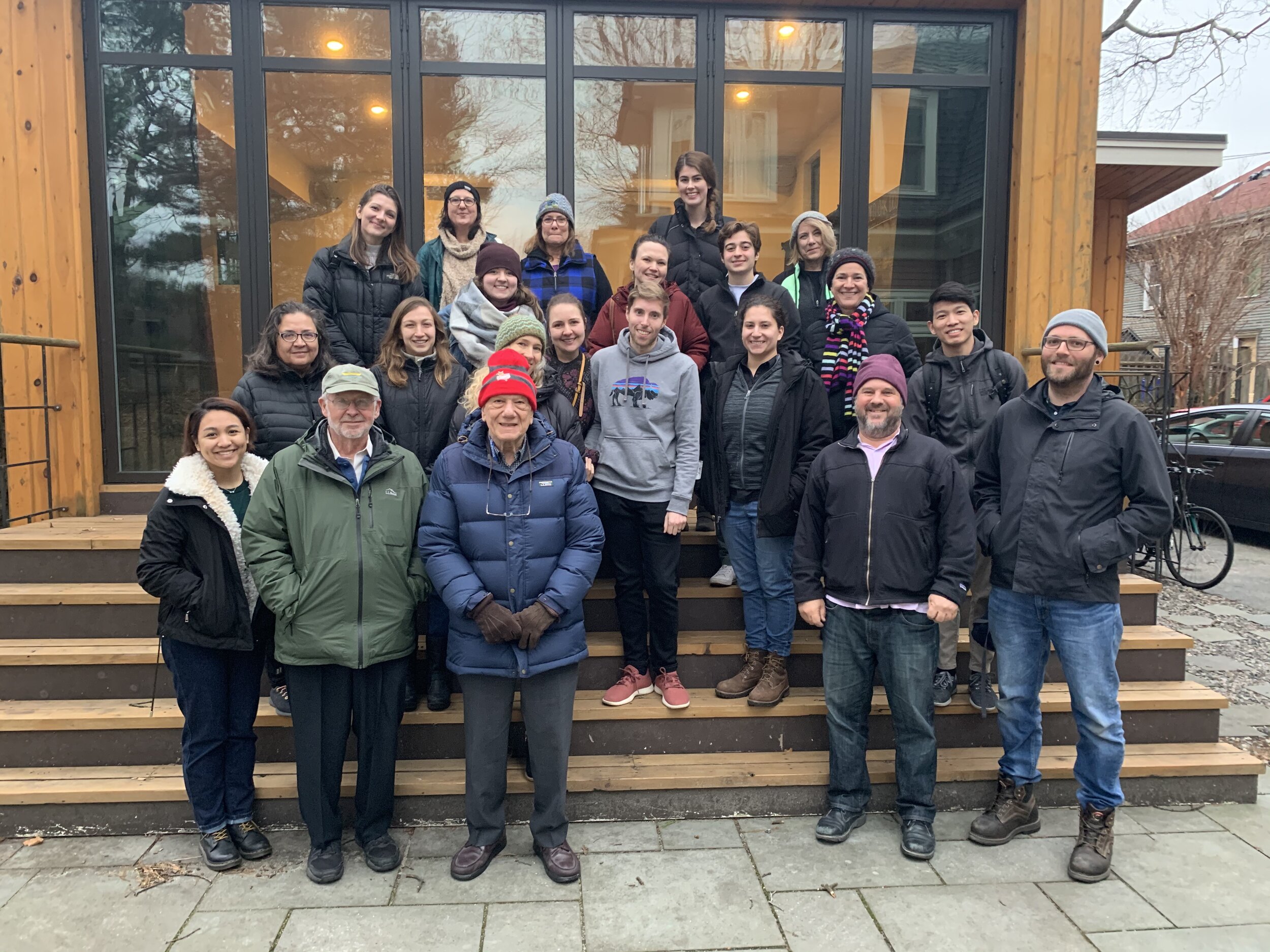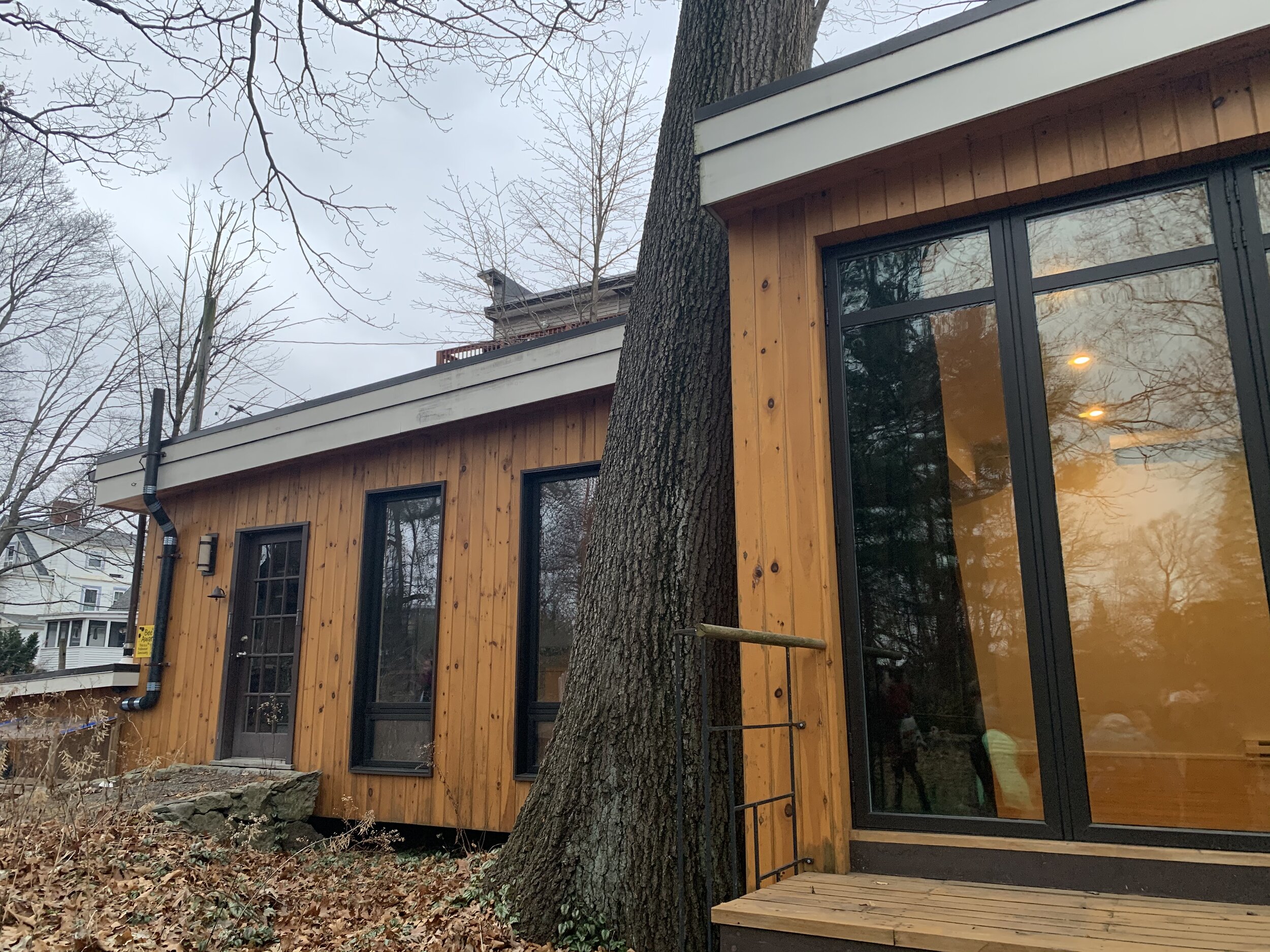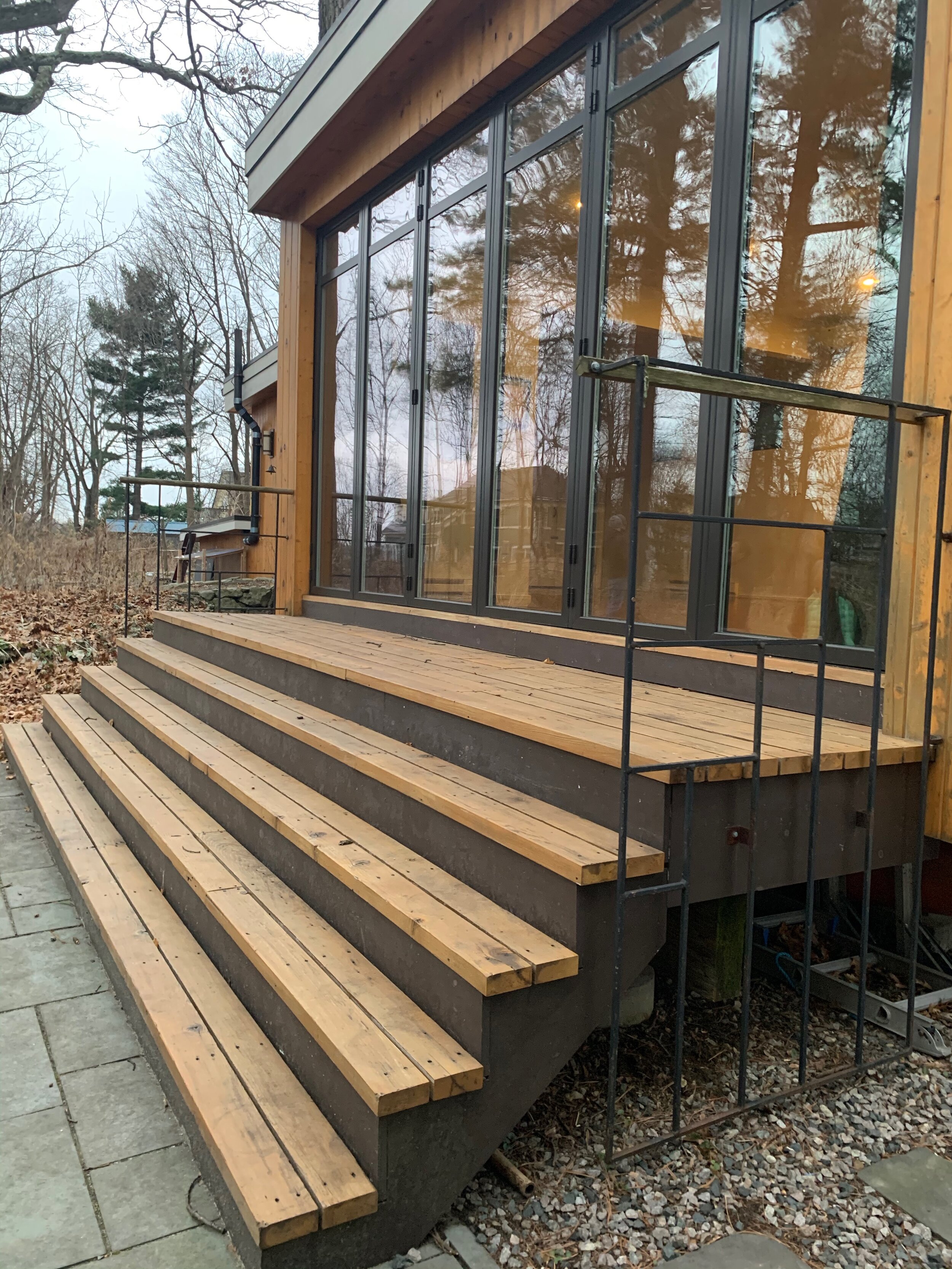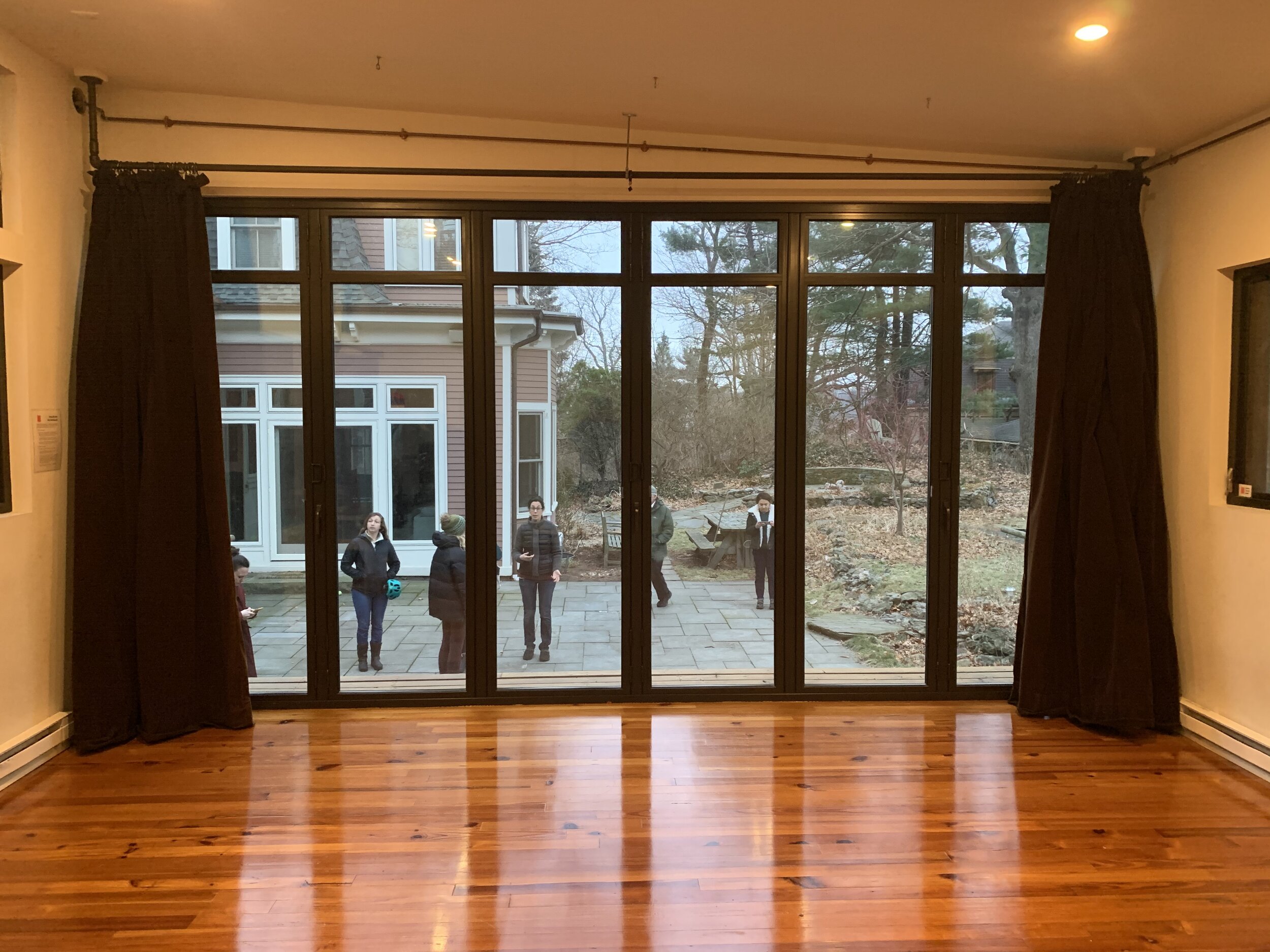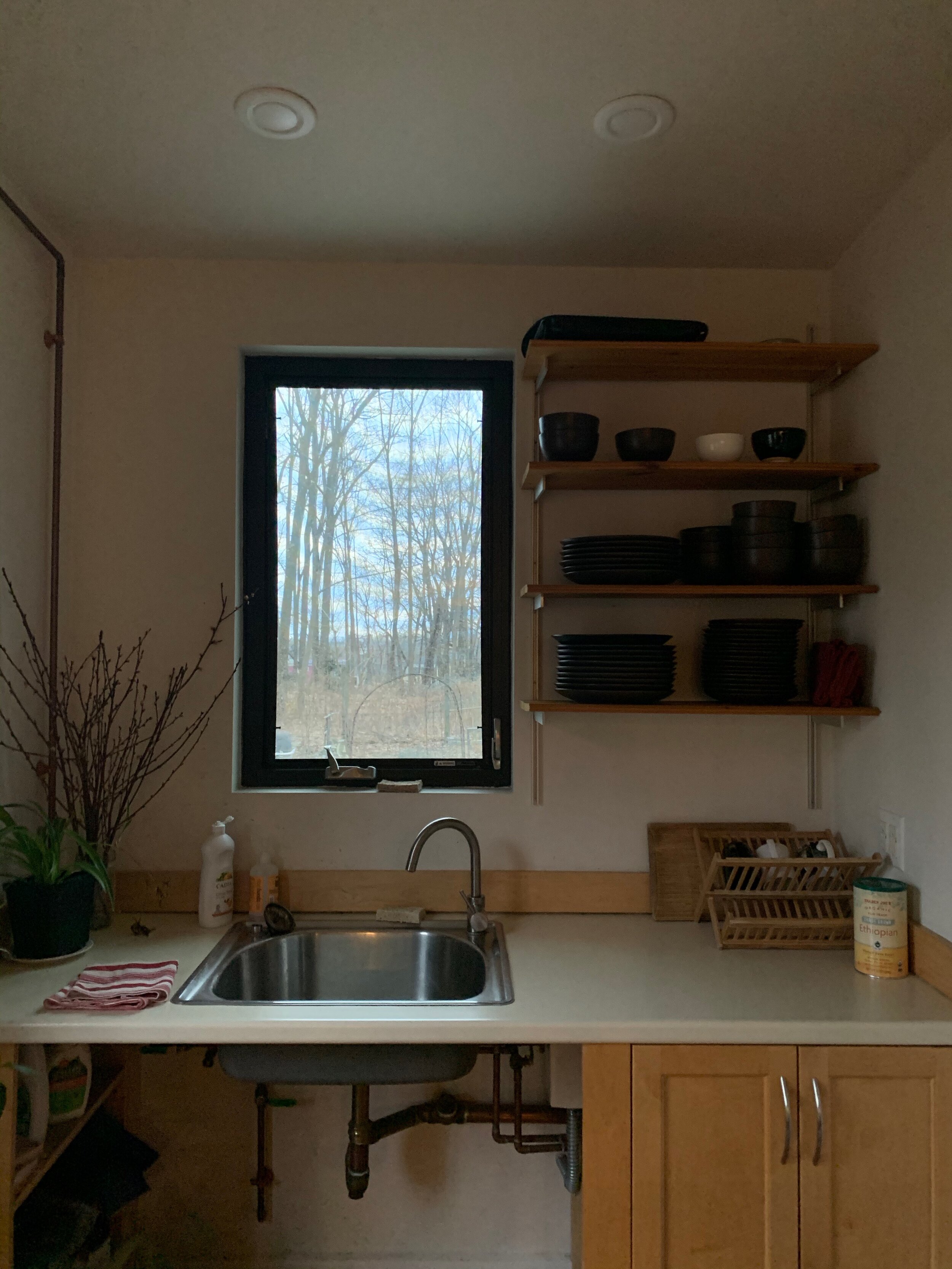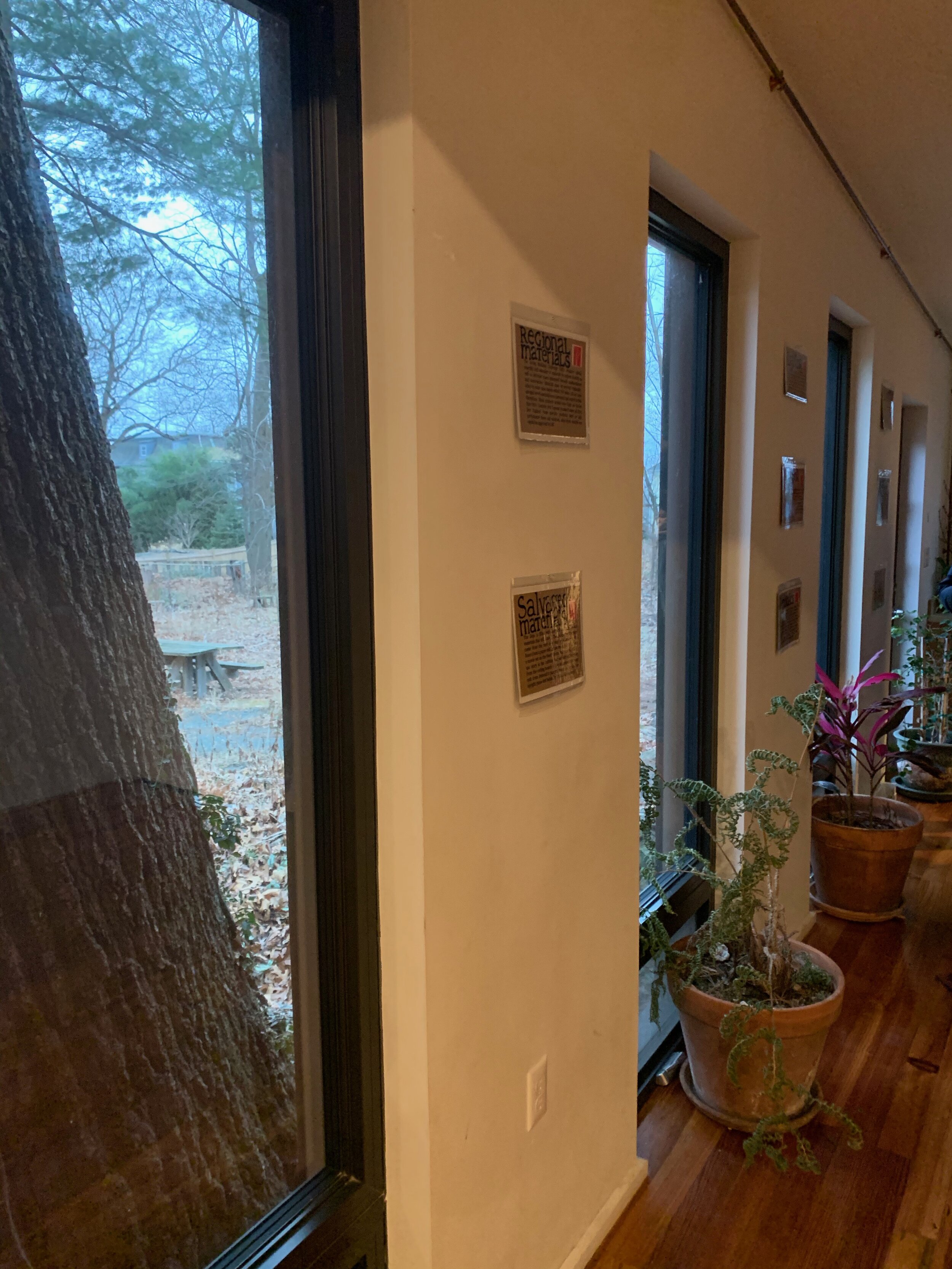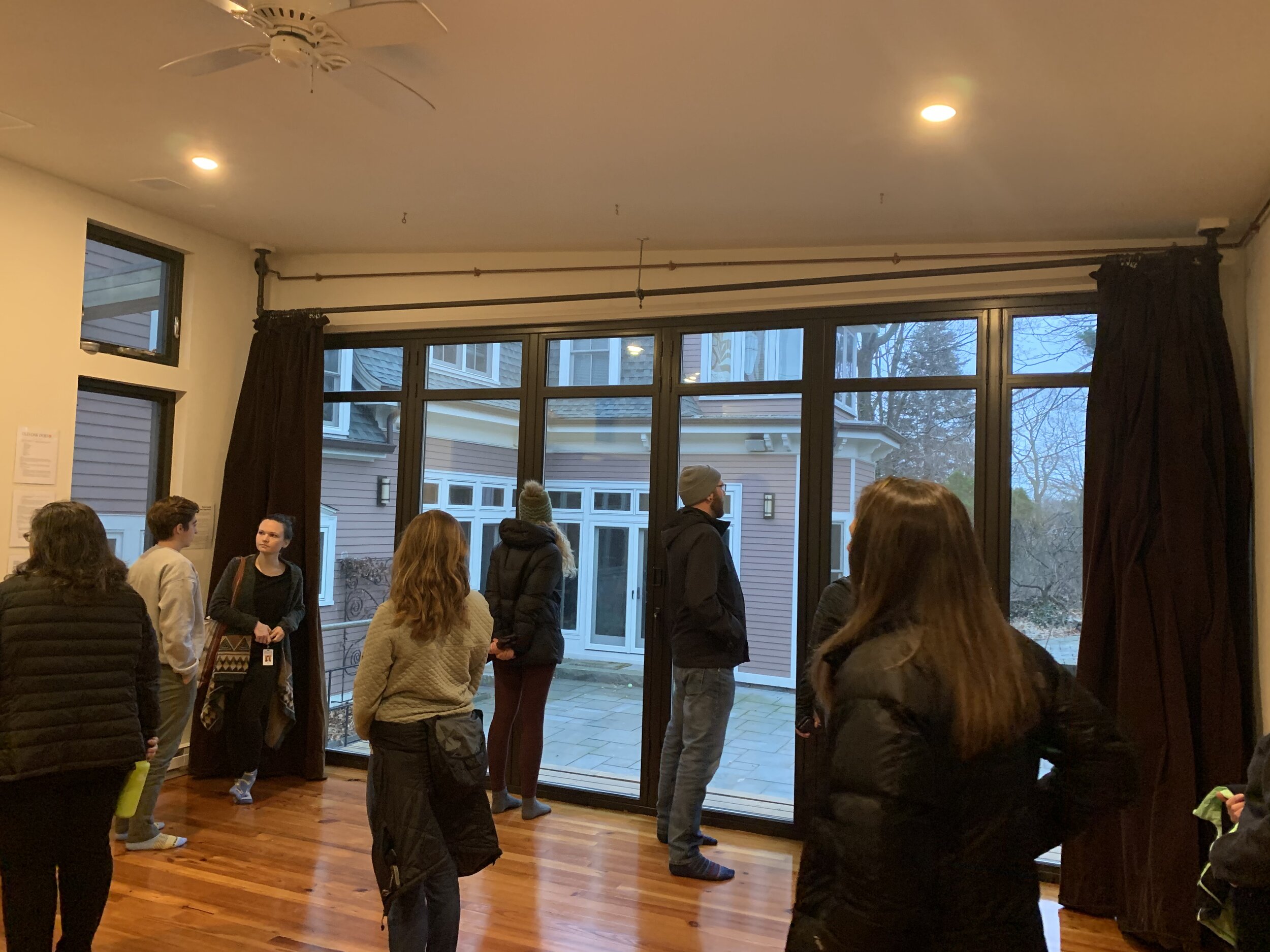by Alex Stock
Recently, Climable led a free field trip to Old Oak Dojo, an awesome community center in Boston’s Jamaica Plain. Nestled in the owner’s backyard in space formerly occupied by a run-down shed, the Dojo hosts community yoga, open mic nights, and local advocacy group meetings. But what makes this structure truly unique is that it is one of just a handful of buildings in the country to meet the rigorous standards of the Living Building Challenge* (LBC) and become a Certified Living building.
Green building certification programs are nothing new — you may have heard of LEED certification or even Passive House. However, the LBC takes these certification standards to the next level. A Living Building creates a positive relationship between the structure and its environment, is self-sufficient, and even creates more energy than it uses. Those brave enough to attempt the challenge must meet seven standards, known as “petals” — place, water, energy, health and happiness, materials, beauty, and equity. Deborah Frieze, owner of the Old Oak Dojo, helped us break down what each of these petals means.
For the Old Oak Dojo, the place petal was highly focused on its namesake — a 130-year-old oak tree around which the dojo was snugly built. The building rests on raised footings to protect the root system and not disturb the natural flow of water. While working in a small space around a century-old oak tree sounds tricky, Deborah told us that the real challenge came with the energy, water, and materials petals. The LBC mandates that the structure produce more energy (clean energy, of course) than it uses, but the Dojo is shaded by massive oak trees and has no means of collecting wind, hydro, or geothermal energy. To solve this problem, Deborah and her design team went door to door, asking neighbors with sunny roofs if they would allow her to put solar panels up.
The materials petal was also difficult; the LBC places certain materials, such as PVC, on a Red List*, meaning you can’t use them at all if you want your building certified. To get around this, the Dojo uses radiant heating through the floors with hand-made, PVC-free wiring. Most of the other materials are salvaged or repurposed too: the framing, the doors, the windows, the cubbies. As you sit on the beautiful pine floors, it’s fascinating to imagine they were salvaged from a paper mill in Lawrence.
The Dojo’s biggest hurdle was the water petal. In the city of Boston, compostable toilets aren’t allowed if your building is on a sewer line (which the Dojo is), so Deborah and her team became engaged in a lengthy regulatory battle with the city utilities to allow the Dojo to use a compostable toilet. After over a year of back and forth, a compromise was reached — the composting toilet was allowed, but the waste had to be hauled off-site instead of composted.
It’s clear that the Old Oak Dojo serves its community well, and its ability to do so while having a positive environmental impact makes this Certified Living Building a true Boston gem.
Want to learn more about the Living Building Challenge and other Certified Living Buildings? Check it out here*!
* June 2023 Update: The International Living Institute, which created the Living Building Challenge certification program in 2006, seems to be having difficulties with their website—it is completely down. We're as frustrated as you are!
Read more about the LBC and it's history here.



